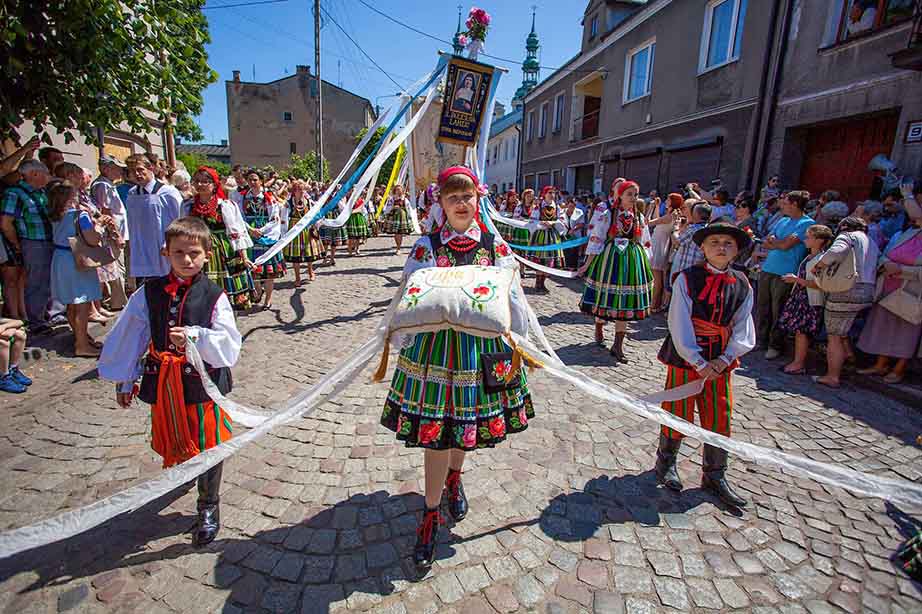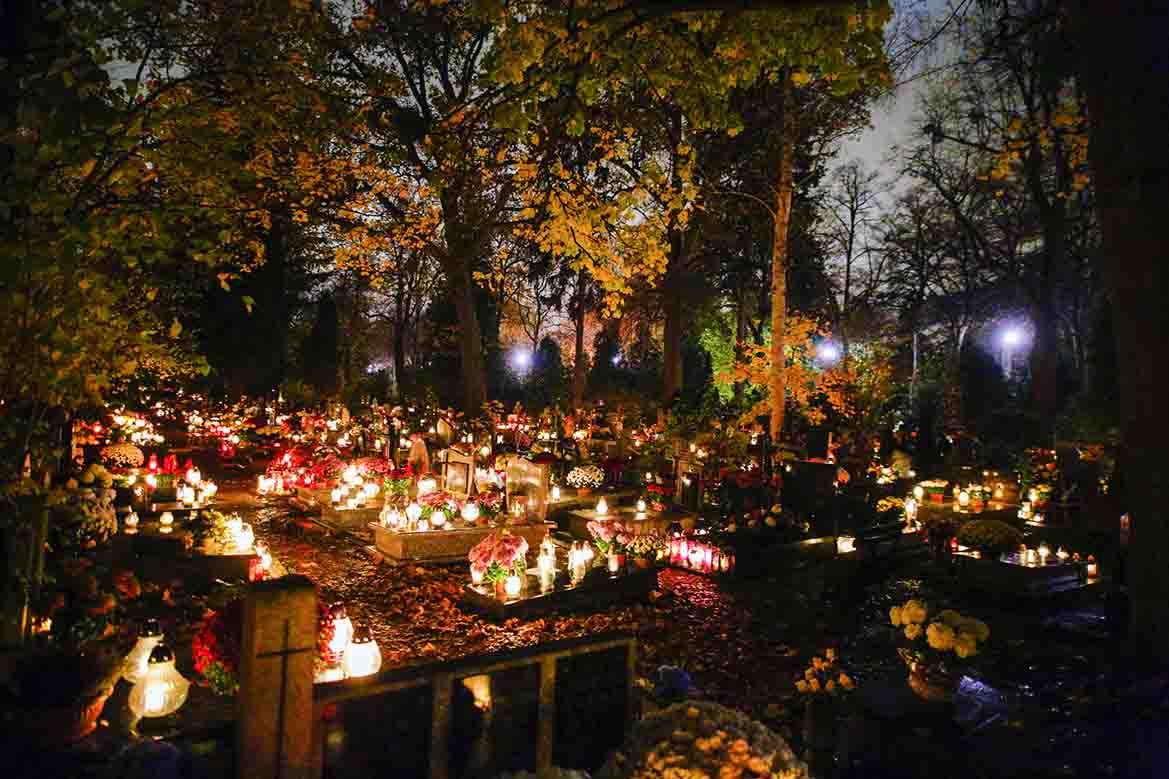There are many customs and events related to the Christmas and New Year period. These are shepherdess, carol singers, or New Year's Eve party and fireworks. Most of these forms already have a very long, established tradition, but at the end of the liturgical season of the Nativity of Christ, we now have a completely new, fresh tradition — it's hard not to call it "new" since it only appeared a few years ago — the Procession of the Magi.
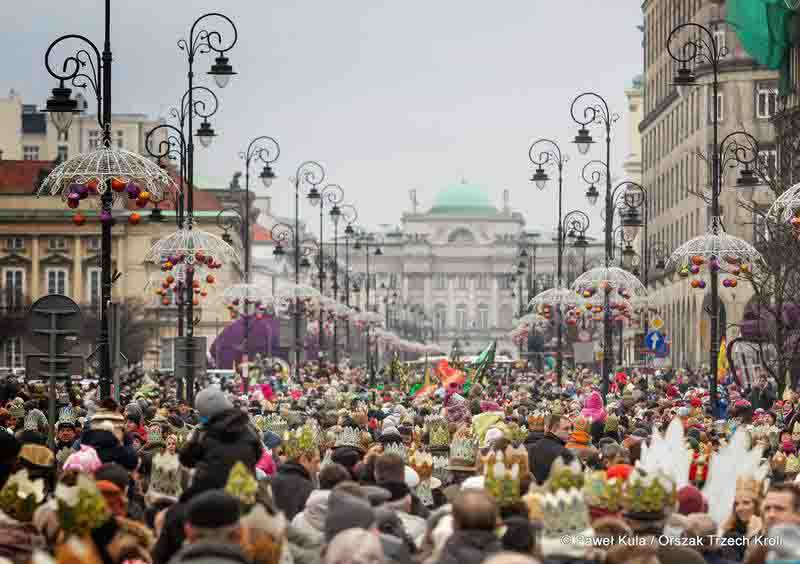
Celebration of the Three Kings Day (Source: The Procession of the Three Kings Foundation)
The Three Kings, the Three Wise Men, or the Three Magi, according to evangelical descriptions, are three people who visited the newborn Jesus in the stable in Bethlehem. It was there that the King of Kings and the Lord of Lords was born, so the devotion to such a great person and the placing of due gifts at his feet was described in the Holy Book, which is the Bible.
We should know that God the Father, with the visit of the three wise men to the stable, duly blessed his Son's stay here on earth, because this great Person, the greatest of people existing on this earth ever, must have had due provision as God's Son. The gold that Jesus received from one of the visiting guests was enough for a very prosperous life for Jesus and his family. Jesus worked with his stepfather Joseph as a carpenter only because the work is ennobling, but financially he did not have to.

Celebration of the Epiphany (Source: PAP)
Led By a Star
According to Christian tradition, the three wise men are people who were guided by the star of Bethlehem. This star showed them the way to little Jesus, so that they could give him appropriate gifts. The only information about the wise men is found in the description of the first Gospel, i.e. Matthew, in chapter 2 1-12. Contemporary exegesis of this text points out to us that these guests first of all worshiped Jesus as a great and significant person here on earth.
According to Biblical Scholars
Biblical scholars emphasize that this text thoroughly explains the mystery of the person of Jesus as Messiah and Savior. In the light of this description, it is recognized that these sages were historical figures, and of course real ones, who knew about astronomical and astrological issues.
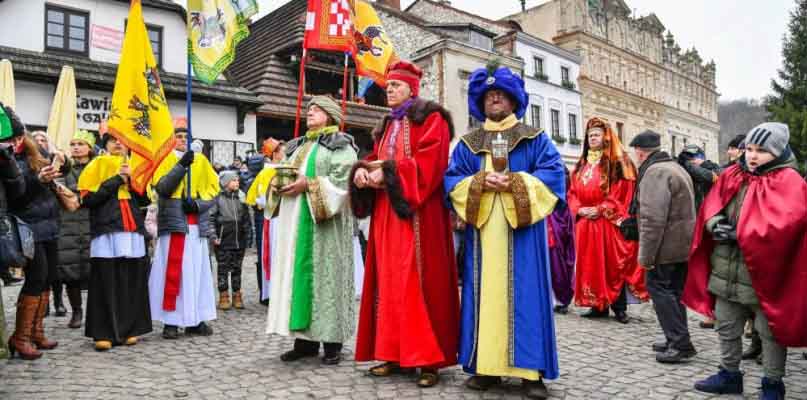
Celebration of the Epiphany (Source: Fundacja Trzech Króli)
What We Can Read in the Gospel
The story of the Gospel of Matthew about the adoration of the wise men before Jesus seems to be a kind of instruction about the mission of Jesus, born of a Jewish woman, who has a great task to fulfill here on earth. It is believed that God the Father called into existence the chosen nation, i.e. the Jews, in which Jesus was born as a man. Thus, we read more about this fact and the fact of the three wise men bowing before Him in the Jewish Midrash.
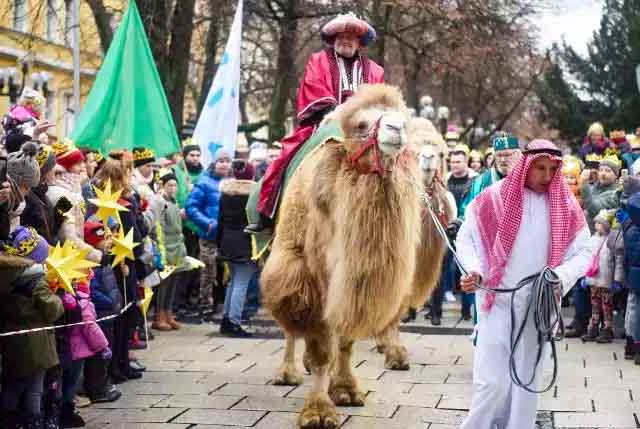
Celebration of the Three Kings Day (Source: The Procession of the Three Kings Foundation)
Midrash is a story used in Israel to explain the meaning of God the Father's intervention in the history of the chosen people. According to historical research, the story of the evangelist Matthew about the three kings was modeled on the Midrash about Moses staying in Egypt. This midrash is preserved in the work of the historian Josephus. Comparing the content of this midrash with the story of the adoration of the three wise men shows us the thematic relationship between Jesus and Moses and between Herod and Pharaoh.
The Description of the Great Traveler
The great traveler Marco Polo, in his diary of his trip to the Far East, connects the Three Magi with the Persian city of Saveh.
There is a city of Saveh in Persia from which the three Magi came out when they went to worship Jesus Christ...
The story of the Evangelist Matthew shows us that Jesus from the moment of birth is the promised Messiah, anointed for a great mission to save people from total annihilation. His mission is therefore universal. The adoration of the three magicians is a symbolic announcement of the recognition of Jesus as the anointed one and the ruler of all nations, whom God has sent to us.
Were There Three...?
The Gospel story of these wise men does not really tell us how many there were. We presume there were three because they gave three gifts. Perhaps it was also the case that they contributed to these gifts, although it was rather unusual. Jesus was recognized as the Great King, so each of them wanted to give him something important from themselves. Gold was always given to the king as a gift, so Jesus was recognized as the king of kings, because he was the first to place this gift at his little feet. Myrrh symbolized the future martyrdom of Jesus, and frankincense his glorification.
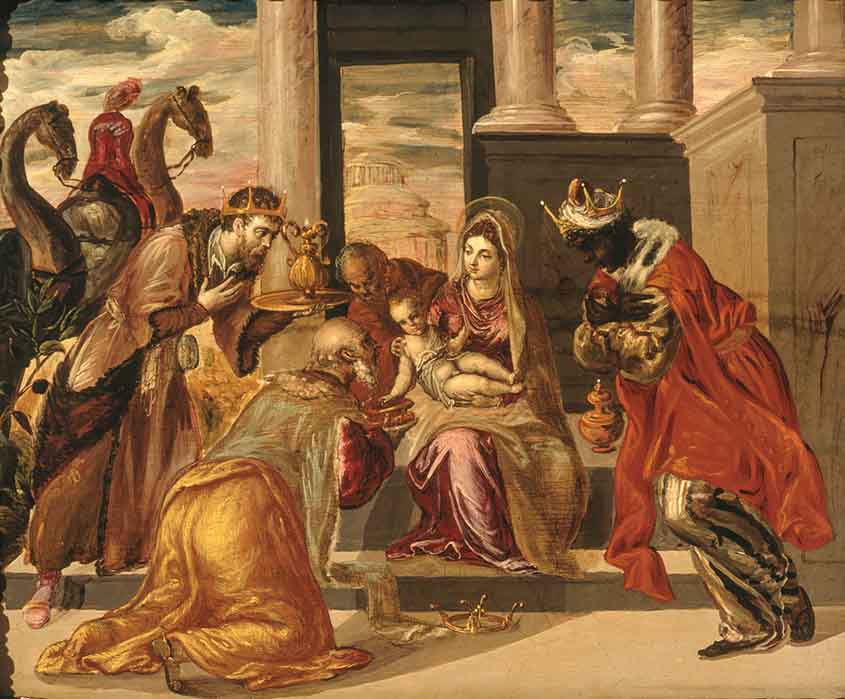
Adoration of the Magi Kings (Adoración de los Reyes Magos), El Greco, 1568, Museo Soumaya, Mexico City (Source: Wikipedia)
Names of the Three Kings
In Western Christianity, they are popularly referred to as Casper, Melchior, and Balthazar, although the Bible does not actually state what their real names were. This is because their names are to be less important than the name of the Great Son of God. In some translations of the Persian books, these visitors in the stable of Bethlehem are referred to as the caste of learned Persian priests. Persian priests in ancient times, because they dabbled in astrology, and an important element of this religion was waiting for the coming of an Extraordinary Man into this world.
Customs of the Twelfth Night
After a festive dinner on Epiphany Day, which according to Catholic tradition falls on January 6, all guests were served a cake with an almond in it. The one who found it in his piece of cake became the "almond king". The custom of walking around the village with a star was also known. When such a group of carolers with a star knocked on a house, they received a few pennies or sweets called "szczodraki" from the household members.
Blessing of the Chalk
From the eighteenth century, the custom of blessing the chalk on January 6 became popular. It was usually used to write the letters K+M+B and the date of the current year on the front door. These letters may be an abbreviation of the Latin wish Christus Mansionem Benedicat, which translates to May Christ bless this house. The interpretation of the abbreviation C†M†B as the first letters of the Latin names of the main truths of Christianity, i.e. Knowledge - Wedding - Baptism, is also admissible.

K+M+B on the door (Source: PAP)
The Beginning of the Carnival
This day was also the beginning of the carnival. In the Polish tradition, it was also a time of carol singing for costumed people who visited the surrounding houses with wishes of prosperity. And it should be known that these masqueraders reconstructed the scenes of the arrival of the Magi to Bethlehem.

Celebration of the Three Kings Day (Source: Fundacja Orszak Trzech Króli)
The Procession of the Three Kings
The main figures in this procession are, of course, the Three Kings following the Star of Bethlehem, accompanied by a retinue of knights, warriors, court ladies, or figures in regional costumes. On the road along which the procession travels, you can see stagings depicting the events accompanying the Nativity of Christ. Christmas carols are sung and appropriate cheers are raised throughout the journey. Participants go together to some characteristic place of the city, where the adoration of the Child and the Holy Family takes place and gifts are laid, and then caroling together with refreshments.
Street nativity plays are organized on the streets of many towns in Poland, even now in the modern era. It comes from the Polish tradition of carolling, which was transferred to the cities. During the procession, the Magi drive through the streets of the city throwing candy to children. The Polish procession of the Three Kings consists of children and adults who are walking through the streets, heading to the Stable to bow to Jesus — the most important King of the universe. Along the way, Christmas carols are sung, all participants receive colorful paper crowns, and the gift for the newborn Jesus is the sacrifice of one's own life for Him.
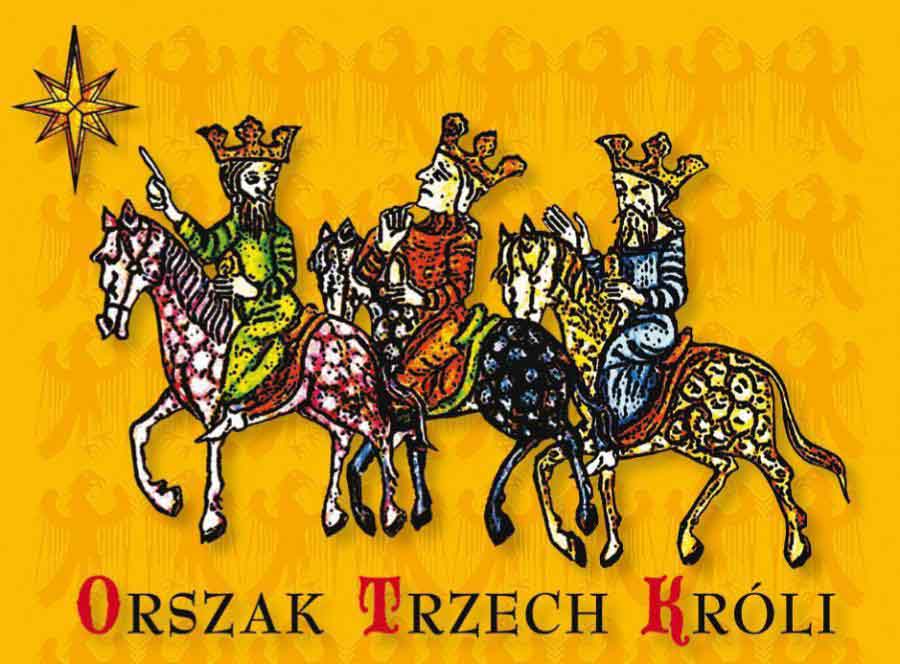
Procession of the Three Kings (Source: Fundacja Orszak Trzech Króli)
It is worth devoting a few sentences to the "Procession of the Three Kings" Foundation (Fundacja Orszak Trzech Króli), which already has the status of a public benefit organization. The main goal of the Foundation is to spread pro-family and community values. The "Orszak Trzech Króli" Foundation revives the dormant tradition of celebrating the Christmas period. Throughout the year, it also works on other projects, supporting their activities, e.g. promoting volunteering or charity.
Translation from Polish by Andrew Woźniewicz.






